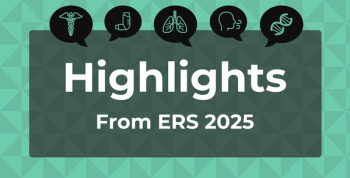
Combination and Monotherapy Data Highlight Rocatinlimab’s Real-World Potential in AD: A Q&A With Emma Guttman-Yassky, MD, PhD
Rocatinlimab shows real-world promise for moderate to severe AD, enhancing treatment efficacy and reducing steroid reliance, explains Emma Guttman-Yassky, MD, PhD.
Recent phase 3 data from the ROCKET-IGNITE (
To better understand how these results may translate into real-world practice, The American Journal of Managed Care® (AJMC®) spoke with Emma Guttman-Yassky, MD, PhD, chair of the Department of Dermatology at the Icahn School of Medicine at Mount Sinai and a trial investigator. In this second half of our discussion, Guttman-Yassky offers insight into the evolving role of rocatinlimab as both a standalone and combination therapy, its potential to reduce reliance on topical steroids over time, and how differences in rescue therapy and safety data across trials may reflect the treatment’s long-term promise in clinical care.
Return to
This interview has been lightly edited for clarity.
AJMC: ROCKET-SHUTTLE, which combined rocatinlimab with topical steroids, showed higher Eczema Area and Severity Index 75 response rates compared with the monotherapy rates in ROCKET-IGNITE. In your clinical opinion, will rocatinlimab primarily be used in combination with topicals, or do you see a significant role for it as a standalone monotherapy for specific patient populations?
GUTTMAN-YASSKY: A real-life situation is when people can use whatever they want at home, and usually that's topicals because they don't have 2 prescriptions for biologics at the same time. Typically they will use topical steroids, and this is not unusual. We see that results with topical steroids are a little bit better because it's an add-on treatment as well. I want to also say that the monotherapy that I presented showed actually a little bit better results than the first monotherapy treatment, and that is not unusual. We see some differences between studies as well, but in real life, definitely topical steroids will be used. With that being said, after patients achieve control, they stop using topicals. We see that all the time, and I bet that if the results will be increasing from 24 weeks onward, when patients are clearing, they probably will not need the topicals—we see less and less topicals being used when patients achieve clear status.
AJMC: In ROCKET-IGNITE, a significant number of patients in the placebo group required rescue therapy compared with the rocatinlimab groups (53% vs 28%). Could you elaborate on how these different rates of rescue therapy use might reflect the real-world patient experience, particularly concerning symptom control and quality of life, in the initial months of treatment?
GUTTMAN-YASSKY: In ROCKET-IGNITE, we do see that many fewer patients in the drug arm are utilizing topical steroids. This tells us that the drug is kicking in. I think the same trend will continue after 24 weeks, so when we see more clearance with drug, I think nobody will use it in the drug arm after that. This is what I anticipate, because at the end of the day, that's why patients want to go into these trials. They want to stop using the topicals. They still are using them out of necessity, but eventually they want to stop using them. For me, a success will be if at week 48, almost no patient uses it and they are clear.
AJMC: ROCKET-SHUTTLE findings demonstrated a higher incidence of serious adverse events in the treatment arms (3.1%-4.4%) vs placebo (0.9%), whereas ROCKET-IGNITE showed comparable SAE rates to placebo (2.8%-4.6% vs 5.5%). Could you provide any insight into this difference and the overall safety profile of rocatinlimab, especially when used with concomitant topical treatments?
GUTTMAN-YASSKY: I don't think these differences are huge. To me, it's within some margin of error, I think, because I don't think the add-on topicals made a lot of difference. Particularly that there was some rescue allowed in the other study. With that being said, the people who use rescue therapies, they were not considered for the primary analysis—the analysis was different—but I don't think the topical steroids are the ones that maybe added to the safety. Sometimes we see differences between studies; that's why I like to always evaluate the safety of phase 3 trial as a whole, to look at the entire program and not just as an individual analysis. Because there might be something at one side, one patient. I would not look at one study alone. Overall, we are seeing good safety. I also see patients at my site who are very happy. There are some chills, pyrexia, a very small number of oral ulcers. But overall, I would say the safety is good. I think we'll learn a lot from the continuation study, because we'll have several years worth of data.
AJMC: ROCKET-Ignite presented a prespecified “all data” analysis, which included patients regardless of rescue therapy use and showed notably higher efficacy rates. What is the clinical significance of this secondary analysis, and what does it tell us about the true potential of rocatinlimab for patients who may still need intermittent rescue topicals?
GUTTMAN-YASSKY: I think that's an important analysis, because it's more of a real-life situation. You don't tell patients, “Utilize topical steroids twice a day,” like usually in a compost study. You really make them use it regularly, more than once a day, whereas in the other one, rescue may mean that maybe they utilize it only a few times a week. I actually like it because it's real life. In real life, you use it whenever you feel a little bit itchy and you need something. It's not regimented, where you tell patients, “You need to use it once a day, twice a day,” so I like it. For me, that's very meaningful. That's why, not only is the prespecified analysis important to me, but also the all-data analysis that includes those patients who utilize rescue therapy, and it's primarily topical rescue.
References
- Simpson EL, Gooderham M, de Bruin MS, et al. Rocatinlimab with concomitant topical therapy significantly improved clinical signs and symptoms of atopic dermatitis in adults: results from the phase 3 ROCKET-SHUTTLE trial. Presented at: EADV; September 17-20, 2025; Paris, France. Abstract LBA-78.
- Guttman-Yassky E, Kabashima K, Chovatiya R, et al. Efficacy and safety of OX40-receptor targeting with rocatinlimab in moderate-to-severe atopic dermatitis: results from the phase 3 ROCKET-Ignite trial. Presented at: EADV; September 17-20, 2025; Paris, France. Abstract 4265.
Newsletter
Stay ahead of policy, cost, and value—subscribe to AJMC for expert insights at the intersection of clinical care and health economics.













































